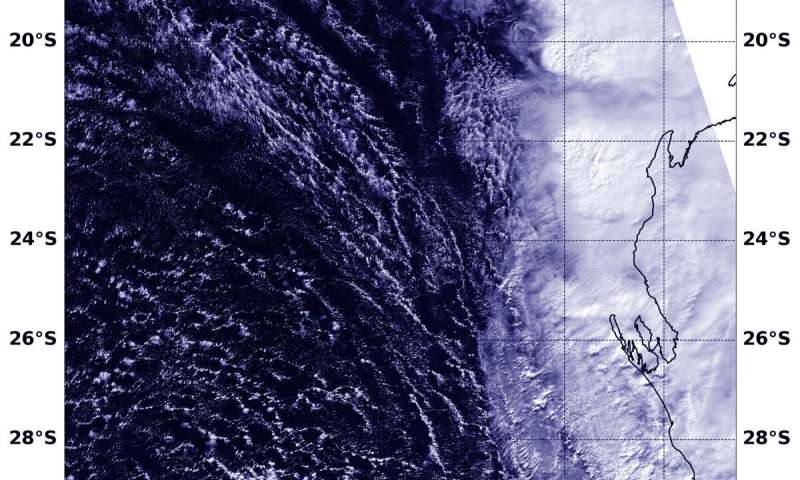NASA catches the extra-tropical ending of Mangga
by Science X staff
By Sunday, May 24, Tropical Cyclone Mangga had already transitioned to an extra-tropical storm and was affecting the southwestern coast of Australia.
When a storm becomes extra-tropical, it means that a tropical cyclone has lost its "tropical" characteristics. The National Hurricane Center defines "extra-tropical" as a transition that implies both poleward displacement (meaning it moves toward the north or south pole) of the cyclone and the conversion of the cyclone's primary energy source from the release of latent heat of condensation to baroclinic (the temperature contrast between warm and cold air masses) processes. It is important to note that cyclones can become extra-tropical and retain winds of hurricane or tropical storm force.
The Australian Bureau of Meteorology issued Severe Weather Warnings in Western Australia on Sunday as the extra-tropical system tracked in a southeasterly direction.
The final warning for Mangga came on May 23 at 5 pm EDT (2100 UTC), when it was located near latitude 21.6 south and longitude 104.7 east, about 525 nautical miles west of Learmonth, Australia. Mangga was moving southeast at a speedy 44 knots (51 mph/81 kph) and had maximum sustained winds of 35 knots (40 mph/65 kph).
NASA's Aqua satellite provided a visible look at the extra-tropical low-pressure area along the southwestern coast of Western Australia on May 24. The center of circulation was difficult to pinpoint in the visible image, captured by the Moderate Resolution Imaging Spectroradiometer, an instrument that flies aboard Aqua.
On May 24, the Australian Bureau of Meteorology's Severe Weather Warning called for "Damaging, locally destructive winds and abnormally high tides for people in Central West, Lower West, South West, South Coastal, South East Coastal, Great Southern, Central Wheat Belt and parts of Gascoyne and Goldfields districts."
The extra-tropical low-pressure area passed over the southwestern part of the state on Monday, May 25 as it continued to weaken and move back over open waters of the Indian Ocean.
Provided by NASA's Goddard Space Flight Center